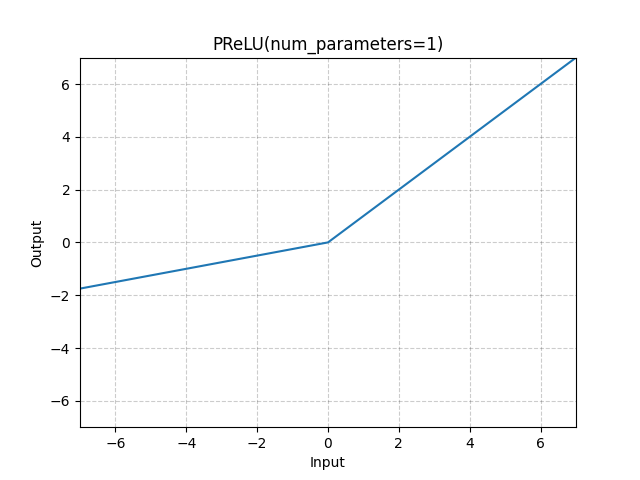PReLU¶
- class torch.nn.PReLU(num_parameters=1, init=0.25, device=None, dtype=None)[source]¶
Applies the element-wise PReLU function.
\[\text{PReLU}(x) = \max(0,x) + a * \min(0,x) \]or
\[\text{PReLU}(x) = \begin{cases} x, & \text{ if } x \ge 0 \\ ax, & \text{ otherwise } \end{cases} \]Here \(a\) is a learnable parameter. When called without arguments, nn.PReLU() uses a single parameter \(a\) across all input channels. If called with nn.PReLU(nChannels), a separate \(a\) is used for each input channel.
Note
weight decay should not be used when learning \(a\) for good performance.
Note
Channel dim is the 2nd dim of input. When input has dims < 2, then there is no channel dim and the number of channels = 1.
- Parameters:
- Shape:
Input: \(( *)\) where * means, any number of additional dimensions.
Output: \((*)\), same shape as the input.
- Variables:
weight (Tensor) – the learnable weights of shape (
num_parameters).

Examples:
>>> m = nn.PReLU() >>> input = torch.randn(2) >>> output = m(input)
